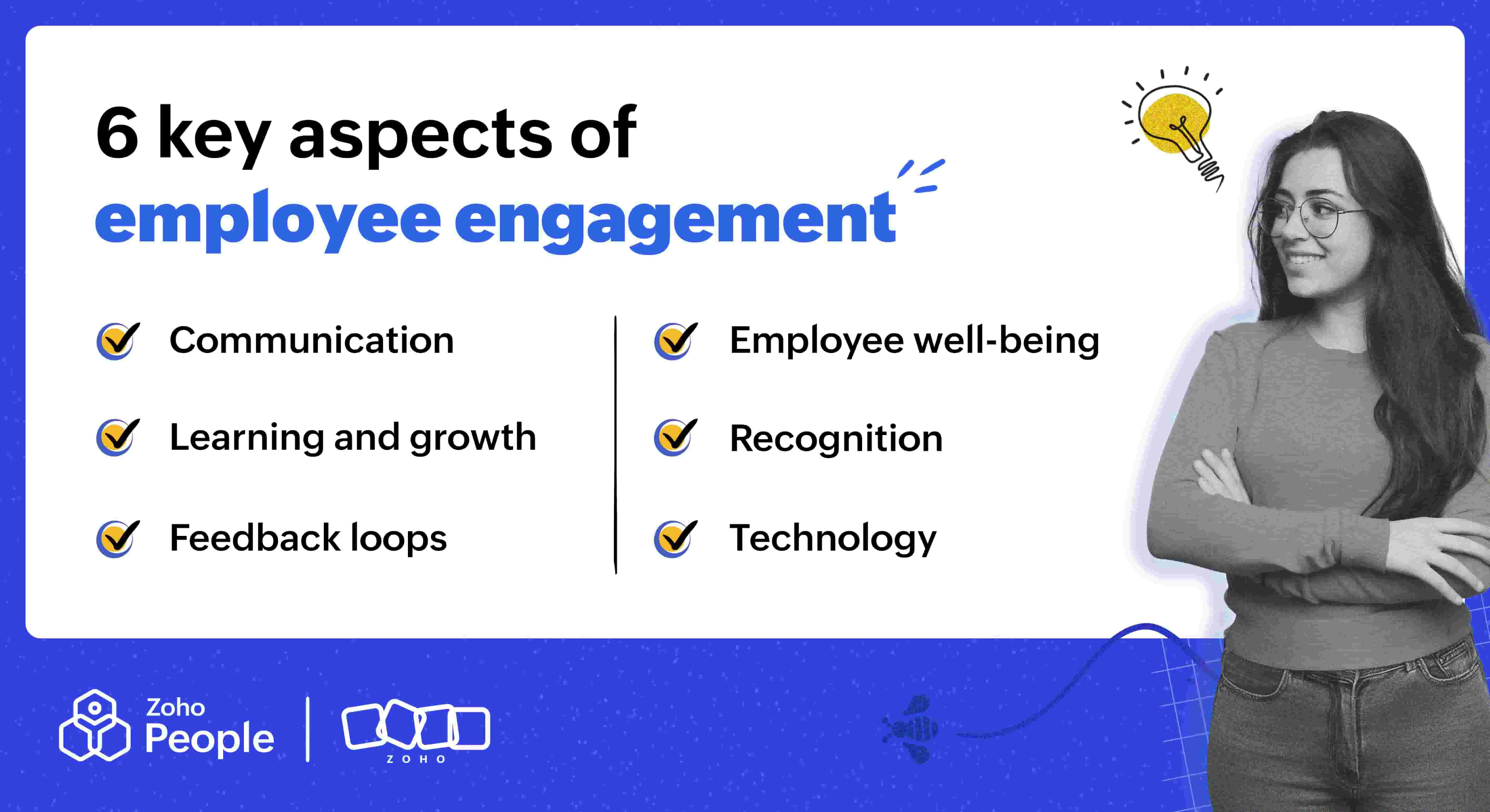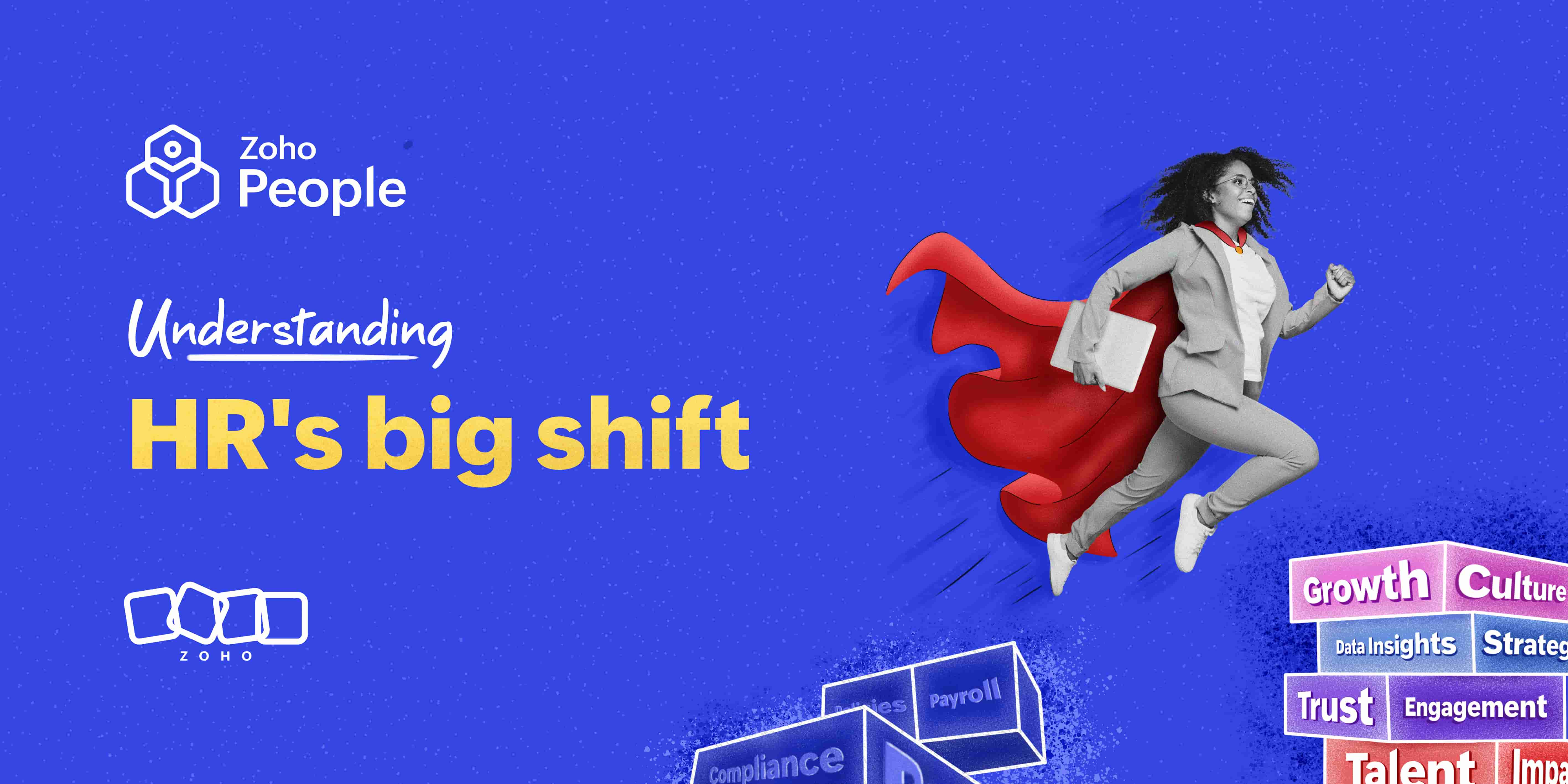- HOME
- More
- Employee Engagement
- 6 strategies to raise employee engagement levels to an all-time high
6 strategies to raise employee engagement levels to an all-time high
- Last Updated : November 25, 2025
- 201 Views
- 6 Min Read

According to recent Gallup research, global employee engagement fell from 23% in 2023 to 21% in 2024. Disengagement, when left unchecked, can have serious consequences, including loss of productivity, higher attrition, increased absenteeism, and a negative workplace culture. Occasional activities like annual surveys, "fun Fridays," and team lunches aren't enough. Organizations have to think beyond these basic strategies to ensure employees feel heard, respected, supported, and aligned with the company's mission. Here are some actionable ways to engage employees at every level:

Communication
Establish an open-door policy
Leadership accessibility is the key to establishing trust, transparency, and two-way communication. Encourage managers and your HR team members to remain approachable and listen to employees without becoming defensive or judgmental. Assure employees that their feedback will never lead to retaliation. If your managers are working on tight schedules, allocate specific hours during the week when they can have these conversations.
Run frequent surveys
Pulse surveys are an excellent way to get real-time insights on employee sentiments. They can highlight key issues like burnout, stress, and lack of work-life balance early on. Run pulse surveys every month, and enable employees to answer them anonymously if desired. Decide ahead of time what you want to learn from your employees, and keep questions focused—between five and ten—to prevent survey fatigue.
Keep employees informed
Leverage employee intranet portals to share announcements and recent developments with your employees. Encourage C-level leaders to conduct frequent "Ask us anything" sessions to answer employee questions and share updates with them directly. At the team level, managers can conduct meetings every two weeks to keep the team updated about everything that's happening at the organization.
Learning and growth
Offer personalized training programs
Offer training programs that align with your employees' roles, department, designation, career aspirations, and individual skill gaps. Performance reviews can provide the required insights you need to determine what each employee needs. Use AI-powered training platforms that can suggest the right training programs, and provide flexible learning options so that employees can choose how, when, and where they want to learn.
Support mentoring
Mentoring can be an powerful way to help your employees grow in their careers. Encourage your senior employees to share their expertise with younger team members, and set clear expectations for everyone. Provide training on essential skills like empathy, active listening, and effective coaching techniques. Pair mentors and mentees based on their shared goals, interests, and skills, and foster a safe environment that encourages regular meetings, feedback, and recognition of progress.
Align training with organizational goals
When building training programs, be sure to understand your organization's long-term goals and vision. Identify the skills and competencies required to achieve them so that your training initiatives can address them. Being able to contribute to overall organizational goals makes employees feel valued, motivated, and engaged.
Feedback loops
Encourage two-way feedback
To keep employees engaged, you have to create a culture where feedback is seen as a shared responsibility, rather than just managers passing down feedback during performance reviews. Encourage employees to provide feedback about their work, team, managers, and the organization. Let them share their concerns, suggestions, and opinions. Encourage managers to listen actively with empathy rather than listening to respond.
Make it a point to act on feedback
Employees will stop providing feedback if they see that it's not being used to make any positive changes. That's why it's incredibly important to put their insights into practice. Always make it a point to identify different avenues for improvement. Set clear goals, establish fair timelines, and develop an action plan to make these changes. Keep employees informed on what can be improved, what might take time, and what cannot be done, along with the reasons.
Train managers on offering feedback
Feedback from managers should always feel constructive. Soft skills like clear communication, emotional intelligence, and critical thinking will help managers offer effective feedback. Encourage them to offer feedback on time and respectfully, with a growth and development perspective rather than a nitpicking mindset.
Employee well-being and work-life balance
Promote flexibility
Building a flexible work culture significantly improves work-life balance, and it can be especially effective for the younger generation of employees. Flexibility options can include floating holidays, unlimited leave, compressed work weeks, flexible hours, and remote work. Determine which forms of flexibility best suit your organization, and guide managers to set clear expectations and prioritize work quality. Trust, rather than micromanagement, is key to making workplace flexibility successful.
Provide mental health support
Create a well-being-first culture where it's easy to talk about mental health without the stigma. Offer counseling services to employees so that employees can manage their stress. You can also conduct meditation, fitness, and yoga workshops. An Employee Assistance Program (EAP) is also great option to consider when looking to address workplace and personal life stressors that affect an employee's work performance.
Develop a positive work culture
People's well-being is greatly influenced by their environment. That's why it's incredibly important to develop a positive work atmosphere. Foster trust, transparency, and respect at every level. Ensure that employees are able to work independently without micromanagement. Make sure that work is evenly balanced among all employees to prevent overworking anyone. Design ergonomic work stations that are well-lit, ventilated, and comfortable. Cultivate a culture of teamwork to help employees feel connected to one another.
Recognition
Acknowledge every win
Rather than waiting for formal performance reviews, encourage managers to acknowledge employee efforts in every team meeting. They can also highlight these achievements publicly in company group chats or provide personalized feedback during one-on-one conversations to praise their success and explain their impact on overall organizational goals.
Offer personalized rewards
Personalized and meaningful rewards can go a long way towards reassuring employees that you fully recognize their efforts. Run surveys to understand what kind of rewards employees expect to receive—whether it's experiential gifts, training opportunities, wellness programs, gift baskets, or even company swag. Personalize the approach to align with employee expectations and further motivate them to strive for excellence.
Support peer-to-peer recognition
Offer employees the opportunity to give and receive spontaneous peer shout-outs. This informal recognition fosters a positive work atmosphere where employees support each other's growth. If you want to make it more structured, you can also adopt a system for submitting and tracking shout-outs.
Technology
Adopt intuitive tools
Adopt a people-first approach when selecting workplace tech tools. They should make work easier for employees through features like automation and have clean, familiar, and logical user interfaces. Additionally, go for systems that integrate seamlessly with other tech tools so that employees don't have to juggle a handful of different apps.
Provide the necessary support and training
Before adopting any tech tools, be sure to run the necessary training programs for your employees. Help them understand how these tools can make work easy for them while fitting into their daily work. Provide access to 24/5 support so that they can ask any questions that they may have, and solicit feedback to identify and solve challenges early on.
Focus on self-service tools
Self-service tools can offer an exceptional working experience to employees while saving a lot of time for your HR team. Employees can manage their routine tasks from a single centralized platform without having to reach out to the HR team every time. From marking attendance and applying for leave to updating personal details and taking up training programs, managing every task becomes easy, quick, and transparent with a self-service portal.
Wrapping up
By building open communication channels, offering meaningful learning opportunities, creating robust feedback loops, supporting well-being and work-life balance, recognizing contributions, and leveraging intuitive technology, HR teams can build an environment where employees feel engaged, empowered, and motivated. When engagement becomes a part of the organizational culture, employees not only thrive individually but also contribute more effectively to the company’s success.
 Tarika
TarikaContent Specialist at Zoho People


